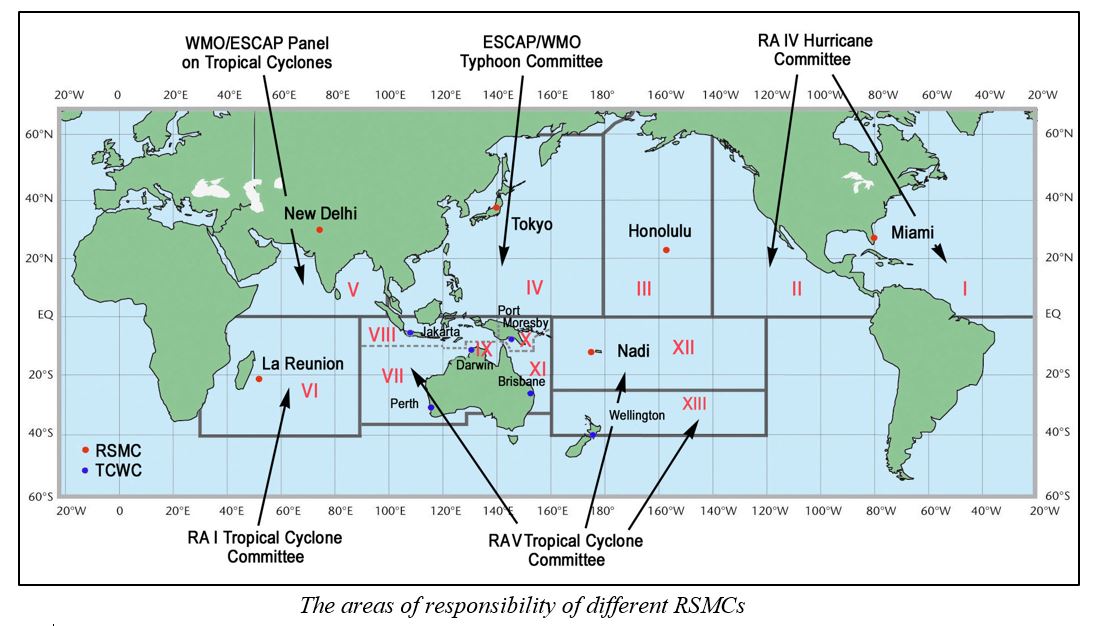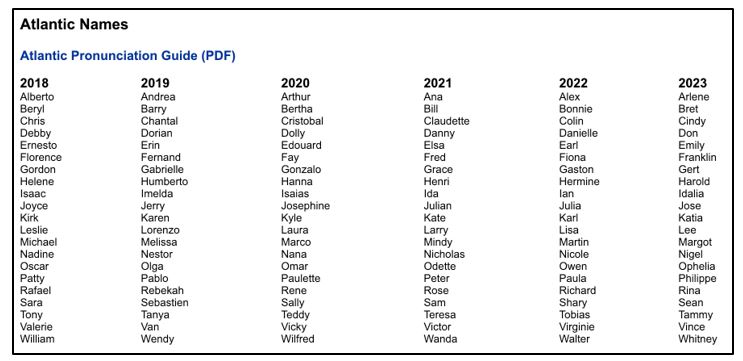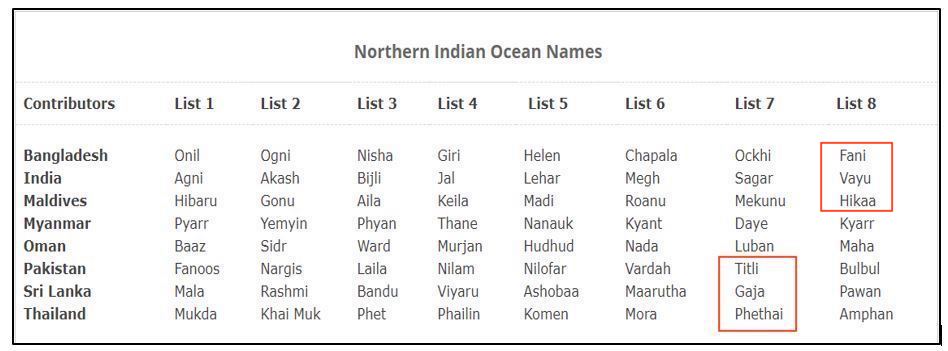Hudhud, Titli, Phethai, Fani, Vayu and now Amphan are among the names of cyclones we have heard of. But ever wondered how these Tropical Cyclones are named? Here is an explainer.
Tropical cyclone Amphan (pronounced Um-Pun) intensified rapidly in the Bay of Bengal to become a ‘Super Cyclonic Storm’ bringing dangerous winds, storm surge and flooding to coastal areas of West Bengal in India and Bangladesh. But ever wondered how these Tropical Cyclones are named? This naming has a history & a process. Here is an explainer.
Why name cyclones in the first place?
According to the India Meteorological Department or the Met department (IMD), ‘practice of naming tropical cyclones began years ago in order to help in the quick identification of storms in warning messages because names are presumed to be far easier to remember than the numbers and technical terms. Many agree that adding names to storms makes it easier for the media to report on tropical cyclones, heightens interest in warnings and increases community preparedness.’
Further, it is globally accepted that naming cyclones will help in the following ways.
- It would help identify each individual tropical cyclone.
- It helps the public to become fully aware of its development.
- Local and international media become focused to the tropical cyclone.
- It does not confuse the public when there is more than one tropical cyclone in the same area.
- The name of the tropical cyclone is well remembered by millions of people as it is an unforgettable event whose name will long be remembered.
- Warnings reach a much wider audience very rapidly.
The tropical cyclones are named neither after any particular person, nor with any preference in alphabetical sequence. The names selected are those that are familiar to the people in each region.
What are the bodies responsible for coming with a list of names?
There is a strict procedure in place to determine a list of tropical cyclone names in any ocean basin. The Tropical Cyclone regional body responsible for that basin determines these names at its annual/biennial meeting. The following are the five tropical cyclones regional bodies.
- ESCAP/WMO Typhoon Committee
- WMO/ESCAP Panel on Tropical Cyclones
- RA I Tropical Cyclone Committee
- RA IV Hurricane Committee
- RA V Tropical Cyclone Committee

In addition, the Regional Specialized Meteorological Centres (RSMC) are responsible for the distribution of information, advisories, warnings, monitoring and prediction of tropical cyclones over their respective regions. They are also responsible to name the cyclones.In general, tropical cyclones are named according to the rules at a regional level. For instance, the National Hurricane Committee determines a pre-designated list of Hurricane names for the storms in the Atlantic Ocean. Here, six lists are used in rotation. Thus, the 2018 list will be used again in 2024 and so on.

Even for the Eastern North Pacific Ocean, the lists are re-cycled every six years. The details of the names of the tropical cyclones over different Ocean basins can be seen on the World Meteorological Organization (WMO) website.
What about names of Cyclones in India & the neighbourhood?
The Regional Specialized Meteorological Centre (RSMC) of Tropical Cyclones in New Delhi is assigned the responsibility of issuing weather outlooks and tropical cyclone advisories for the countries in the WMO/ESCAP Panel region bordering the Bay of Bengal and the Arabian Sea. This is also the agency responsible for naming the cyclones in this region.
The WMO/ESCAP Panel on Tropical Cyclones at its twenty-seventh Session held in the year 2000 in Muscat (Oman) agreed in principle to assign names to the tropical cyclones in the Bay of Bengal and the Arabian Sea, which consists of eight panel members.
After long deliberations among the member countries, the naming of the tropical cyclones over north Indian Ocean commenced from September 2004. The recent Cyclone Amphan will be the last to be used in the previous list. In other words, a new list of names will be used hereafter for any cyclone in this area.

During WMO/ESCAP PTC 45th Session held at Muscat, Oman in September, 2018, it was decided to prepare a fresh list of names of tropical cyclones including representation from five new member countries, viz., Iran, Qatar, Saudi Arabia, United Arab Emirates and Yemen (Total 13 member countries). The report of the rapporteur was initially presented by India during 46th Session of WMO/ESCAP PTC held in Nay Pyi Taw, Myanmar in September 2019. After deliberations, the report was finally adopted by WMO/ESCAP PTC with consensus in April 2020.
The India Meteorological Department (IMD) on 28 April 2020, released a new list with the names of 169 tropical cyclones including 13 names each from 13 WMO/ESCAP member countries that are likely to emerge over the north Indian Ocean, including the Bay of Bengal and the Indian Ocean.
The RSMC (New Delhi) gives each tropical cyclone an identification name from the below name list. The identification system covers both the Arabian Sea and the Bay of Bengal.

The following have to be noted while understanding the naming in this region.
- The Panel member’s name is listed alphabetically country wise, starting with Bangladesh followed by India, Maldives and so on.
- The names for the cyclones will be used sequentially column-wise. (List 1 followed by List 2 and so on)
- The first name will start from the first row of column one and continue sequentially to the last row in column eight. Example, this will be as Nisarga, Gati, Nivar, Burevi, Tauktae…………. Samhah.
The lists for the Indian region are used sequentially and are not rotated every few years like the Atlantic and Eastern Pacific lists. Once the lists are exhausted, the panel meets again, to decide on a list of names.
If there is a severe storm that causes a lot of damage/destruction & causes many deaths, then its name is considered for retirement and is not used repeatedly. This is to ensure that the history and record of that cyclone is identified with a unique name.
The Public can also suggest names
The general public can also suggest names to the IMD to be included in the list. The proposed name must meet some fundamental criteria as given below.
- The name should be short and readily understood when broadcast.
- The names must be culturally sensitive and not convey some unintended and potentially inflammatory meaning.
The suggested names can be sent to the following address.
The Director General of Meteorology,
India Meteorological Department,
Mausam Bhawan, Lodi Road,
New Delhi-110003.
Featured ImageBy Meow [Public domain], via Wikimedia Commons



1 Comment
Pingback: How Are Cyclones Named? – Brownite